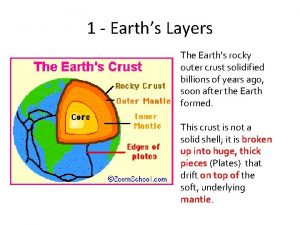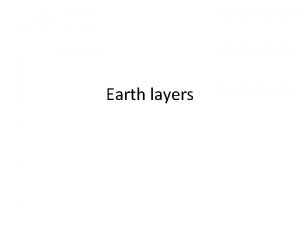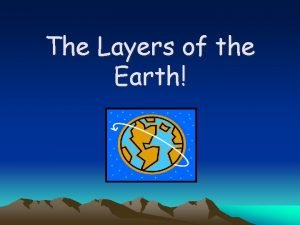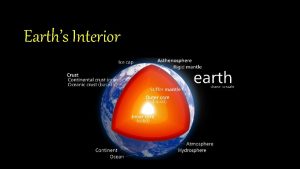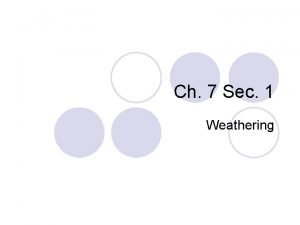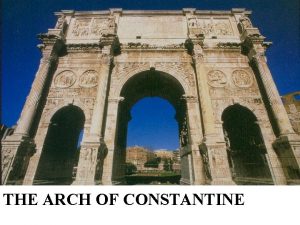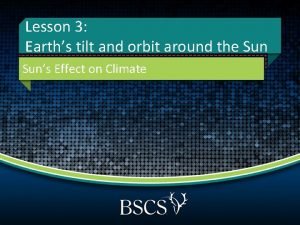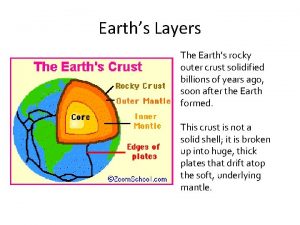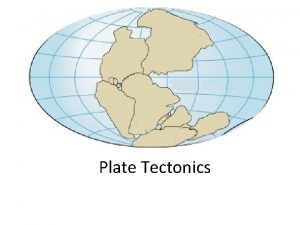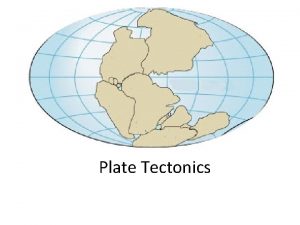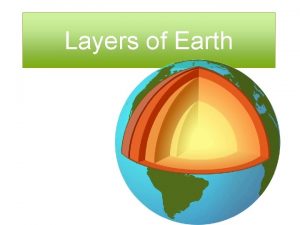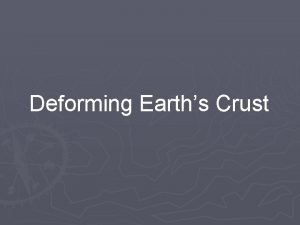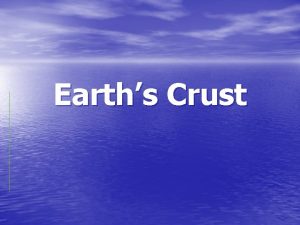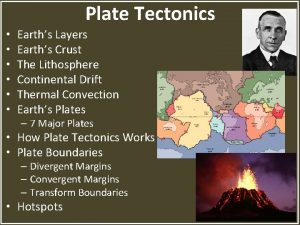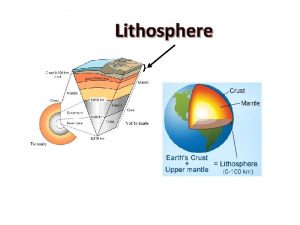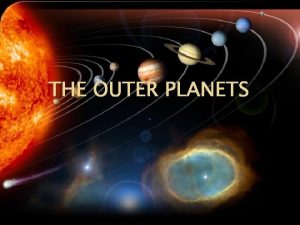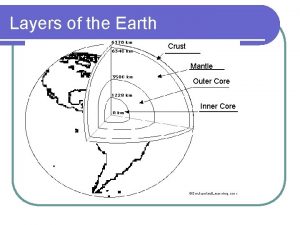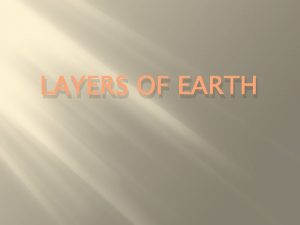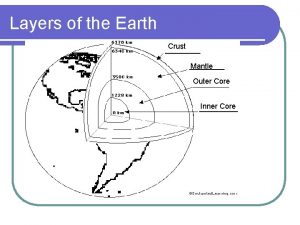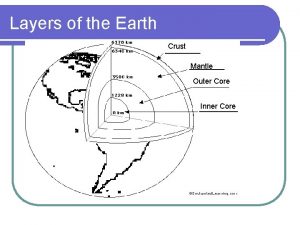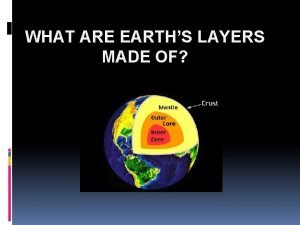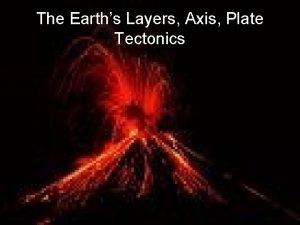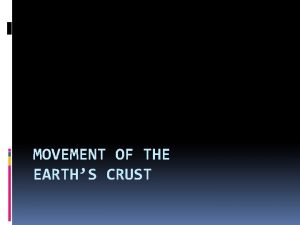1 Earths Layers The Earths rocky outer crust


























- Slides: 26

1 - Earth’s Layers The Earth's rocky outer crust solidified billions of years ago, soon after the Earth formed. This crust is not a solid shell; it is broken up into huge, thick pieces (Plates) that drift on top of the soft, underlying mantle.

2 - The Crust • Outermost layer • 5 – 100 km thick • Made of Oxygen, Silicon, Aluminum

3 - The Mantle • Layer of Earth between the crust and the core • Contains most of the Earth’s mass • Has more magnesium and less aluminum and silicon than the crust • Is denser than the crust

4 - The Core • Below the mantle and to the center of the Earth • Believed to be mostly Iron, smaller amounts of Nickel, almost no Oxygen, Silicon, Aluminum, or Magnesium

5 - Plate Tectonics The Earth’s crust is broken into pieces also called Plates. The plates (pieces) are moving. The plates’ movement is driven by cooling of Earth (convection). ? ? ? Modified from USGS Graphics Convection is like a boiling pot. Heated soup rises to the surface, spreads and begins to cool, and then sinks back to the bottom of the pot where it is reheated and rises again.

6 - Plate Tectonics • Greek – “tektonikos” of a builder • Pieces of the lithosphere that move around • Each plate has a name • Fit together like jigsaw puzzles • Float on top of mantle similar to ice cubes in a bowl of water

7 - What are the two types of tectonic plates? 1)Lithosphere 2) Asthenosphere

8 - What is the Lithosphere? Lithospheric plate • The 100 -km-thick surface of the Earth; • Contains crust and part of the upper mantle; • It is rigid and brittle; • Fractures to produce earthquakes.

USGS Graphics 9 - What is the asthenosphere? Asthenosphere: • Is the hotter upper mantle below the lithospheric plate; • Can flow like silly putty; and • It is an elastic solid, NOT liquid!!

10 - Different Types of Boundaries 1) Transform (2) Divergent (3) Convergent

11 - Three Basic Types of Plate Boundaries Divergent Using hands to show relative motion Transform Convergent USGS Graphics

12 - Three Basic Types of Plate Boundaries Divergent Transform Convergent USGS Graphics

13 - Divergent Boundary – Arabian and African Plates Arabian Plate Red Sea African Plate

14 Divergent Boundary – Iceland

15 -Convergent Boundary – Indian and Eurasian Plates Eurasian Plate Indian Plate

16 - Transform Boundary – San Andreas Fault

17 - Tectonic Plates There a dozen large lithospheric plates (smaller plates not shown). Some plates have continents; some don’t. All are in motion.

18 - Earthquakes There are thousands of small earthquakes every day. “Strong” earthquakes ( about magnitude of 7) occur once a month. Magnitude of over 8 occur about once/year.

19 - Earthquakes & Plate Boundaries Notice that the earthquakes coincide with plate boundaries, and the deepest quakes (blue) are in subduction zones. Modified from USGS Graphics

20 - Volcanoes & Plate Boundaries Volcanoes also tend to occur along the plate boundaries. Modified from USGS Graphics

21 - How fast are the plates moving? Plates move 1 -10 centimeters per year (about the rate of fingernail growth).

Review • Name the 3 main layers of the Earth • What is a tectonic plate? • Name three different types of plate boundaries and one location on Earth for each one

Review • Name the 3 main layers of the Earth – Crust, mantle, core • What is a tectonic plate? – Pieces of the lithosphere that move around • Name three different types of plate boundaries and one location on Earth for each one – Divergent, Convergent & transform

What type of boundary is this?

What type of boundary is this?

What type of plate boundary is this?
 Earths crust
Earths crust Periodic table of elements families
Periodic table of elements families Basalt
Basalt Earths layer foldable
Earths layer foldable Rocky crust
Rocky crust Rocky crust
Rocky crust Layers of earth from most dense to least dense
Layers of earth from most dense to least dense Inner core and outer core
Inner core and outer core Earths layers foldable
Earths layers foldable Layers of the atmosphere
Layers of the atmosphere Physical layers of the earth
Physical layers of the earth Core mantle crust
Core mantle crust The process by which outer rock layers are stripped away
The process by which outer rock layers are stripped away 4 spheres of the earth
4 spheres of the earth Arch of constantine reliefs
Arch of constantine reliefs Earths physical features
Earths physical features Biome near the equator
Biome near the equator Whats earths moon called
Whats earths moon called Earths interior
Earths interior Earths major crustal plates
Earths major crustal plates Earth honey
Earth honey Whats earths moon called
Whats earths moon called Spring earth tilt
Spring earth tilt What does earths tilt do
What does earths tilt do Earths orbit seasons
Earths orbit seasons Whats the name of earths moon
Whats the name of earths moon Earth's thickest layer
Earth's thickest layer




